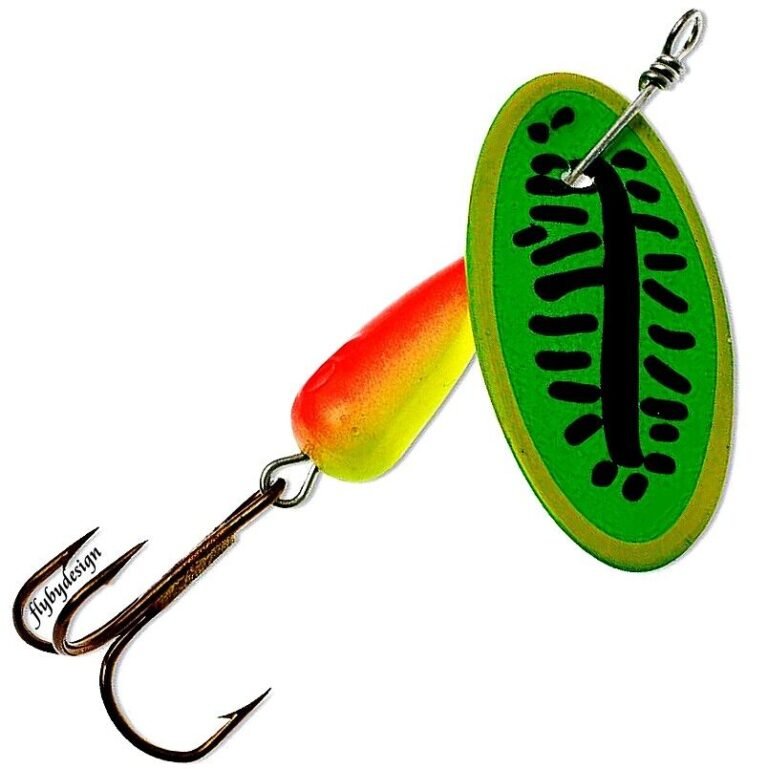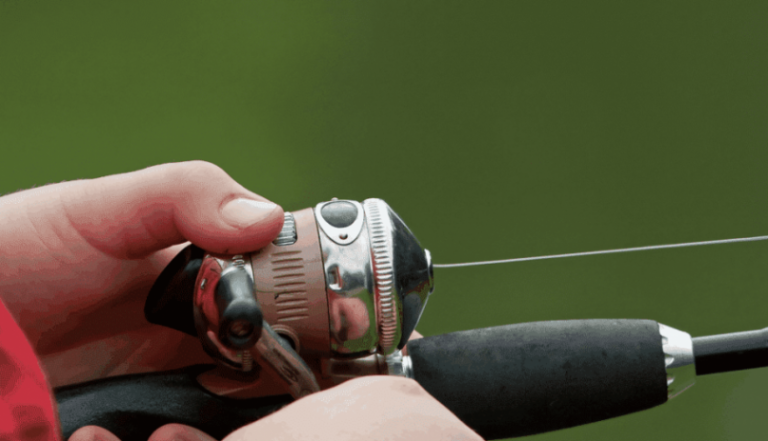The spotted bass has garnered significant attention within fishing communities due to its fighting spirit and challenging nature when caught on a line. Anglers have come to appreciate this species as a prized catch.
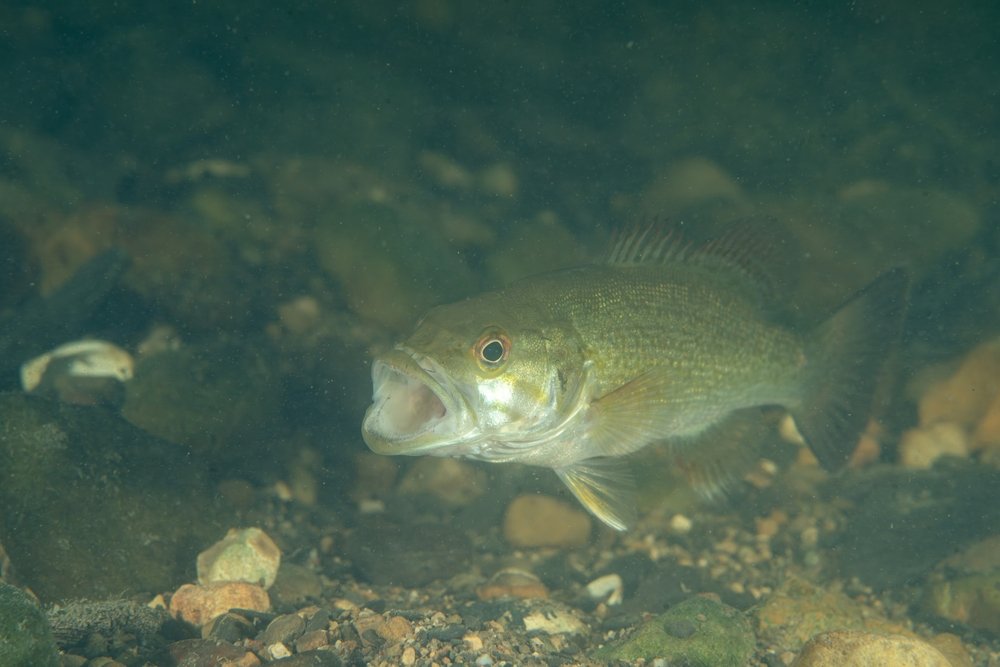
Unveiling the Spotted Bass: A Distinctive Lookalike
The Spotted Bass (micropterus punctulatus), a prized catch for freshwater anglers, is often compared to its close cousin, the Largemouth Bass.
Spotted Bass vs. Largemouth Bass
While both are prized catches for freshwater anglers, the Spotted Bass and Largemouth Bass are distinct members of the black bass family. While they share a similar body shape and fighting spirit, key differences set them apart. Let’s delve into the unique characteristics of each species.
Spotting the Spotted Bass
Appearance: Adorned with a green coat and a white belly, this bass earns its name from the rows of small black spots decorating its lower sides. These spots form a distinctive horizontal line, a key feature absent in Largemouth Bass.
Look for a straighter upper jaw compared to the Largemouth’s pronounced S-curve, and their dorsal fin will be nearly connected, unlike the Largemouth’s slightly separated fins.

Habitat: Crystal clear waters with rocky bottoms are the preferred playgrounds of this bass. They thrive near structures like vegetation or submerged trees and are more commonly found in the southern United States.
Behavior: These feisty fighters are known for their aggressive nature and a tendency to hold tight to cover. They are also more tolerant of flowing water compared to their Largemouth cousins.
Size: Generally smaller than Largemouth Bass, Spotted Bass typically average 12-17 inches long and weigh 1-2 pounds. However, exceptional specimens exceeding 5 pounds can be found in ideal habitats like Lake Lanier, known for its thriving bass population.
Diet: Spotted Bass diet consists of insects, crayfish, and other fish. Larger individuals might even target prey like Blueback Herring, a favorite snack in their Lake Lanier home.
The Allure of the Largemouth Bass Species

Appearance: Largemouth Bass tend to be larger and more elongated than Spotted Bass. Their namesake feature is the large mouth that extends beyond the eye, giving them a distinct appearance. Their sides are often adorned with a dark, broad stripe.
Habitat: Highly adaptable, Largemouth Bass can thrive in various water conditions, including murkier waters. They’re found throughout the United States and favor areas with structures like logs, rock ledges, vegetation, and even man-made structures.
Behavior: Largemouth Bass are renowned for their aggressive strikes and acrobatic displays when hooked. They’ll often leap out of the water, putting on a spectacular fight for their freedom.
Size: Largemouth Bass generally grow larger than the Spotted, with an average length of 18-24 inches and a weight of around 10 pounds. The record-breaker holds the title for surpassing a whopping 20 pounds!
Diet: These are opportunistic predators. Their menu includes fish, crayfish, and, if the opportunity arises, small aquatic creatures like frogs or small mammals.
By understanding these key distinctions, you’ll be well-equipped to identify your catch and appreciate the unique characteristics of both the Spotted Bass and the Largemouth Bass.
Remember, responsible fishing practices are crucial for maintaining healthy populations of these exciting game fish
Distinguishing Stripes: Spotted Bass vs. Smallmouth Bass
While Spotted Bass and Smallmouth Bass share the “bass” title and a fighting spirit, these two are distinct members of the black bass family, a closely related species. Let’s explore the key features that differentiate these exciting sportfish.
The Allure of the Smallmouth Bass:
Appearance: Smallmouth Bass, a closely related species, have a more elongated, streamlined body than Spotted Bass. Their namesake feature is the smaller mouth that doesn’t extend beyond the eye. Their sides often have vertical bars or faint mottling, lacking the horizontal stripes of the Spotted Bass.
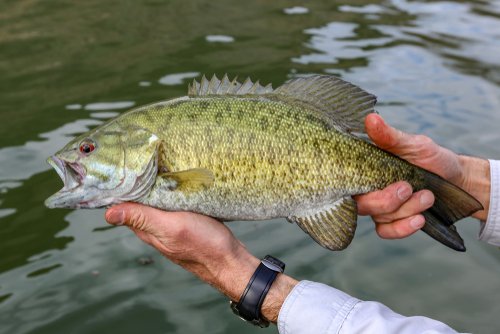
Habitat: Smallmouth Bass favor cooler, clear waters with rocky substrates and abundant cover. They’re more widespread across the United States and southern Canada.
Behavior: These tenacious fighters are known for their powerful bursts of speed and acrobatic jumps during fights. They tend to inhabit deeper waters.
Size: They generally grow larger than Spotted Bass, with an average length of 12-20 inches and a weight of 1-3 pounds. Exceptional specimens can reach 5-6 pounds in ideal conditions.
Diet: These guys are opportunistic feeders consisting of insects, crayfish, and smaller fish. They might also target baitfish like minnows and shad.
By recognizing these key differences, you’ll be a master at distinguishing your catch and appreciate the unique characteristics of both the Spotted Bass and the Smallmouth Bass. Remember, responsible fishing practices are crucial for maintaining healthy populations of these exciting game fish.
Unveiling the Spotted Bass: Habitat & Habits
The Spotted Bass thrives in various freshwater environments, but their preference leans towards cooler, clearer waters than their Largemouth cousins. Here’s a breakdown of their preferred homes:
Flowing Waters: Spotted Bass are often found in rivers and streams with rocky bottoms and good water flow. They favor areas with current breaks like eddies or submerged structures where they can ambush prey.

Lakes & Reservoirs: Spotted Bass tend to inhabit deeper, rocky areas near main channel drop-offs or submerged islands in lakes and reservoirs. Like other black bass species, they may also frequent areas with weed cover or fallen timber.
Spawning Behavior & Seasonal Patterns:
Spotted Bass typically spawn in the spring when water temperatures reach the mid-50s to low 60s Fahrenheit. They prefer clean gravel beds in shallower waters, often near moving water sources like streams or current breaks in lakes.
Following the spawn, these bass disperse and become more active feeders in summer. As water temperatures cool down in the fall, they move towards deeper water.
Diet & Feeding Habits:
Spotted Bass are opportunistic feeders, preying on aquatic insects, crustaceans, and small baitfish. Their diet can vary depending on the season and available forage:
Spring: During the spawn, crayfish and small baitfish become primary targets.
Summer: Mayflies, dragonflies, and other insects are often on the menu, along with small minnows.
Fall: As the water cools, crayfish and small baitfish regain importance in their diet.
The Allure of Spotted Bass: Beyond the Catch
There’s more to appreciate about this exciting game fish. Here’s a deeper dive into their fascinating world:
A Family Affair: Spotted bass belongs to the genus Micropterus, and it is sharing the spotlight with largemouth and smallmouth bass as part of the black bass family (use the keyword “black bass species”). While these “cousins” share a similar body shape and fighting spirit, the Spotted Bass possesses unique characteristics that set it apart for anglers seeking a challenge.

A Spotty Reputation: The namesake dark spots along their body are a key feature for identification, but did you know these markings can vary depending on water conditions and the fish’s mood? Under stress, the spots may become more pronounced, adding to their feisty appearance.
A Diverse Diet: A Spotted Bass’s diet is a testament to their opportunism. They’ll readily consume aquatic insects, crayfish, and smaller fish, adapting their menu to the available food sources throughout the year. This makes them exciting targets for anglers who enjoy experimenting with different lures and techniques.
Nature’s Balancing Act: Spotted Bass are vital in maintaining healthy ecosystems. They prey on smaller, less desirable fish species, helping to control populations and ensuring a balanced aquatic environment. This makes them valuable assets to our lakes and rivers.
A Fight to Remember: Hooking a Spotted Bass is an experience etched in the memory of many anglers. Their spirited fight, fueled by bursts of speed and dogged determination, makes them a worthy adversary. Landing a Spotted Bass is a true test of skill and patience, a reward for those who understand their behavior and habitat preferences.
By appreciating the Spotted Bass beyond just the catch, we gain a deeper respect for these remarkable fish and the ecosystems they inhabit. So, the next time you’re out on the water, keep your eyes peeled for those telltale spots – you might encounter an aggressive fighter that will make your fishing trip unforgettable.
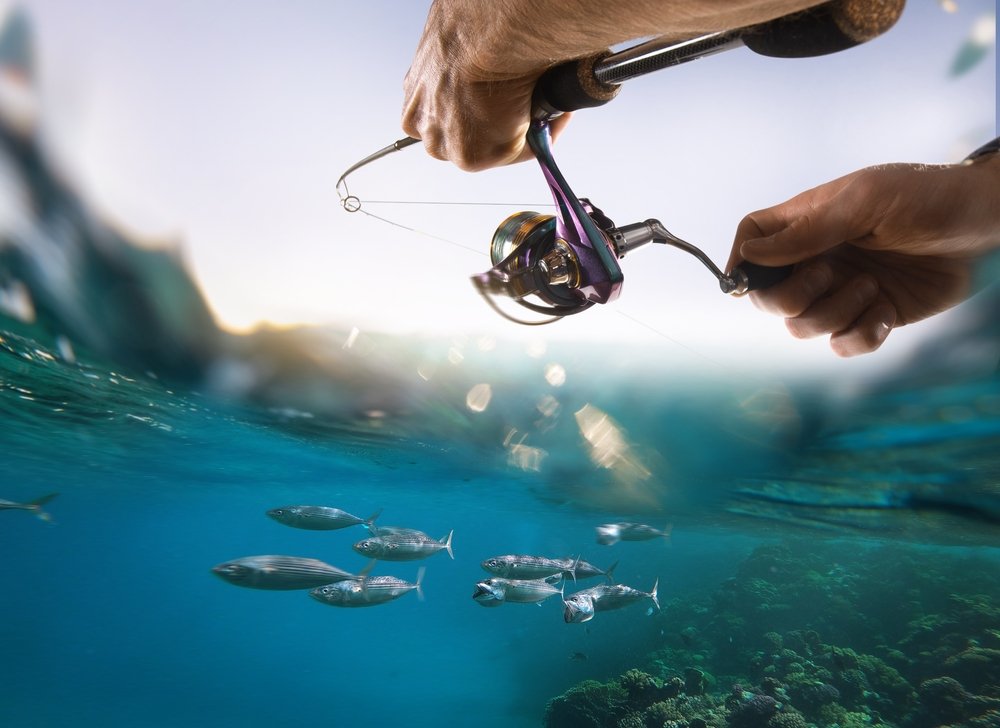
Conclusion – Spotted bass tend to be game fish
The thrill of the hunt, the beauty of the outdoors, and the fight of a spirited Spotted Bass make this a truly rewarding fishing experience. By understanding their habitat and behavior and employing the right techniques and tackle, you’ll be well on your way to becoming a master Spotted Bass angler.



